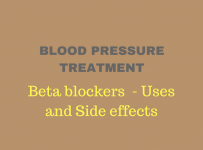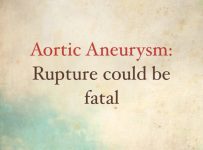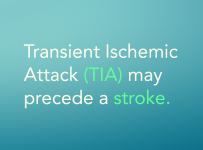Biopsy of thyroid gland is performed when thyroid cancer is suspected. Thyroid nodules are a common finding among patients with thyroid disease. Although in most of the cases they have benign characteristics, sometimes the bizarre appearance of thyroid nodules requires biopsy to differentiate a benign lump from a malignant neoplasm of thyroid gland. A sample of thyroid cells is obtained through biopsy in order to examine their shape and type.
When a Thyroid Nodule is Suspicious
Your doctor will estimate the malignancy potential of a thyroid nodule, by taking in consideration several clinical information:
- Blood tests.
- Consistency of the nodule; hard and immobile nodes are suspicious
- How long you have the nodule.
- If the nodule is painful. Pain is usually associated with an inflammatory process.
- Ultrasound findings – Ultrasound will estimate the size and location of the thyroid and the presence enlarged lymph nodes.
- Radioactive Iodine Uptake – This test will differentiate the active (“hot”) nodules from the inactive (“cold”) ones. Cold nodules are considered suspicious. A normal thyroid gland will uptake the iodine and will use it to compose thyroid hormones. This activity will make the gland identifiable by the radiologist as a “hot” area. If the cells comprising the thyroid gland are abnormal, then no activity will take place because they do not know how to use iodine. This area will designated as “cold”.
- The responsivity to thyroid hormone suppressive therapy.

Biopsy with a Needle
Thyroid gland biopsy is a closed type of biopsy. It is performed with a fine, long needle which is inserted in the thyroid, under ultrasound guidance to reach our the anatomical location of the culprit nodule. This is the so called FNA (Fine Needle Aspiration biopsy). A surgeon or an endocrinologist will do the procedure. Open biopsy of the thyroid is rarely necessary.
Preparation for Thyroid Biopsy
- You will be asked to remove your clothing from the waist up and dress in a gown.
- Next you will have to lie on your back on an exam table or in a reclined medical chair and tilt your head back.
- A disinfectant will be applied on your neck skin to clean the area of biopsy.
- Local anesthesia may not be given due to pain and burning sensation. In most cases ice pack is enough because the procedure is short. If you are concerned about pain, then better discuss with your doctor this issue before going to the procedure.
During Biopsy
- Biopsy begins by inserting the special needle into the designated area of your neck.
- The needle insertion will last about 10 seconds and may be repeated in case that more than one tissue samples are needed.
- An ultrasound will be used to help your doctor locate a very small nodule.
- The thyroid samples will be sent to the pathology lab.
- The biopsy site will be covered with a bandage.
After the Biopsy
Ear pain, mild neck discomfort and slight skin bruising in the area of biopsy are the most common complains after FNA biopsy of thyroid. These symptoms will not last more than 3-4 days and will not necessitate staying home.
Interpretation of the Results
- Benign Nodule (70-75% of the cases) – This means that cancer has been ruled out. In this case it could be due to thyroiditis, hyperplasia, fluid accumulation in form of a cyst.
- Malignant (4-7% of the cases) – The nodule is cancer. There are four types of thyroid malignancies.
Papillary carcinoma is the most common comprising the 80% of thyroid malignancies and it tends to spread in lymph nodes. It is the easiest to treat and has very good prognosis.
Follicular carcinoma appears more frequently in people living in areas with low iodide. It is more likely to spread to lungs or bones.
Hurthle cell carcinoma is a type of follicular carcinoma and accounts for 3% of all thyroid cancers.
Medullary carcinoma comprises the 4% of all thyroid cancers and is more aggressive than follicular and papillary types because it can spread to organs and nearby lymph nodes.
Anaplastic carcinoma is very rare as it accounts for the 1% of thyroid malignancies. It has an extremely malignant potential and does not respond to any kind of treatment. - Inconclusive Diagnosis (10-15%) – The type of nodule could not be identified. This means that either the FNA should be repeated or the thyroid should be surgically removed.
- False negative FNA In 10-15% of the cases the specimen may be characterized by the pathologist as inadequate, so the FNA must be repeated. Note that a negative FNA result does not rule out malignancy especially for very small nodules. Patients are not dismissed without ever seeing by their doctor back again after at least 6 months. Biopsy is also repeated in case that the nodule gets bigger or new thyroid nodules appear.
Did you know? Increased Diastolic Blood Pressure May be Due to Thyroid Disease















